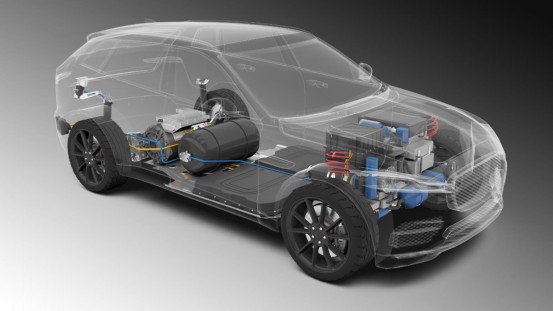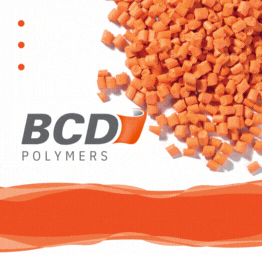Konrad Saur is Vice President – Innovation & Technology at Trelleborg Sealing Solutions. He outlines how, from an R&D point of view, Trelleborg Sealing Solutions are focusing on meeting the needs of the eMobility market.
“According to a report by the International Energy Agency (IEA)*, there were 3.1 million electric vehicles on the roads globally in 2017. However, this is expected to grow exponentially to at least 125 million and potentially 220 million by 2030. eMobility though, is not just about cars. It also applies to e-bikes, e-skateboards, e-scooters and even electric passenger aircraft and helicopters.
“The eMobility market is very fast-paced with new technology and players constantly emerging. It is one in which Original Equipment Manufacturers (OEMs) and system suppliers are faced with distinctive challenges and requirements that are ever changing. This makes the industry unique, in that customers do not yet have clearly defined standards or established solutions. The innovation rate in the industry is therefore extremely high, with severe pressure to bring the right products to market quickly.
“To keep the industry’s momentum going, customers need component suppliers that are reliable and competent partners, who can react quickly to meet their needs; from product development and prototyping, through to serial production.
“At Trelleborg, the customer is always our biggest focus. By combining innovation technology and an efficient R&D organization, we reduce the time needed to develop products and manufacture first functional prototypes. Finite Element Analysis (FEA) and other design programs, allow us to work in the virtual world, helping us to meet our customers’ tight schedules.
“We can also cut development time by utilizing the expertise that we have acquired in other industries and apply it to eMobility applications. Expensive test equipment and facilities originally produced for other sectors, such as our fire testing lab for aerospace and our rotary test benches for hydraulic and pneumatic applications, can be shared to more rapidly bring solutions into production.
“The challenges for sealing are similar in every type of eMobility application. The battery needs to be protected against environmental factors and vibration, components must operate at high speeds and if the systems are lubricated, seals must be compatible to the lubricant.
“When it comes to cars, the requirements for seal performance in an electric motor are generally higher than for seals in a combustion engine. In particular, e-motors operate at significantly greater speeds and therefore traditional seals may generate higher temperatures. They also need components to have a high level of media compatibility and ones that can stand up to difficult environmental factors. And, it goes without saying, quality is paramount.
“Working with our customers on a continual basis, we are developing solutions specifically for eMobility applications. These range from specialist rotary seals, advanced compounds and components for the e-motor battery.
“HiSpin® PDR RT and HiSpin® HS40, were designed with e-axle technology in mind. The rotary seals are engineered to effectively run at the high-speeds required to maximize the range, or distance a vehicle with electric drive units can travel. By doing this, they will be fundamental in supporting the mass adoption of electric vehicles.
“Turcon® MC1 and Turcon® MC2 are the first electrically conductive Polytetrafluoroethylene (PTFE) based compounds for use in spring-loaded and elastomer-energized seals. They enable us to guarantee important properties such as insulation, thermal and electrical conductivity, as well as electromagnetic shielding.
“These Turcon® materials are an optimum solution for the e-motor battery, meeting the new and unique sealing challenges it poses. The compounds need to withstand the high temperatures typically found in the e-motor, as well as the battery’s fluids.
“Fluid compatibility is particularly complex as the media used in the e-motor differs from that used in gasoline and diesel engines, which have established and proven sealing solutions. In addition, there is a further challenge in that a fully charged battery has a different chemical cocktail to an empty one.
“Also, for the battery, we develop and manufacture customer-specific battery cover seals. The battery is adapted to the shape of the vehicle, so each battery housing and its sealing solution is always tailor-made. Produced in Ethylene Propylene Diene Rubber (EPDM) with metal bushings, the covers not only protect the battery from moisture but also provide resistance to high-pressure water, a requirement for all battery manufacturers to achieve an IP66 rating.
“Constant innovation is going to be critical in producing eMobility solutions that allow electric vehicles to operate effectively and give car drivers the independence they are used to from traditionally fueled vehicles. Overcoming ‘range anxiety’ is critical to mass adoption of electric vehicles and supporting customers in achieving this is our focus.
“Though our components relative to the system may not be that significant, they are critical in enabling electrical vehicle development. By listening to and working with our customers, we’ve already developed leading edge solutions for eMobility. We’re proud to be a key player in this booming and important market and will continue to push for the next innovation that will allow electric vehicles to go further, higher and faster more effectively.”



